- Campus Flora
- ✓ Herbs
- ✓ Shrubs
- ✓ Trees
- ✓ Contributers
CAMPUS TREES
Biodiversity in our school
| Family | Amaranthaceae |
|---|---|
| Taxonomic position | Plantae > Tracheophyta > Equisetopsida > Caryophyllales > Amaranthaceae > Amaranthus > Amaranthus Virdis L. |
| Common Name | Slender amaranth,Wild Amaranth,Water leaf |
| Vernacular Name | ചീര |
| Habit | Tree |
| Habitat | Wastelands and degraded forests |
| Nativity | SE. Mexico to Tropical America |
 Description: Herbs, stem green or sometimes reddish, glabrous. Leaves alternate. Spikes terminal and axillary, interrupted. Flowers unisexual, mixed, densely arranged; bracts and bracteoles similar, ovate, acuminate; tepals obovate, obtuse; stamens 3, free; ovary obovoid, styles 2, free. Achenes ovoid, acute, membranous; seeds biconvex, dark brown, shining with hexagonal epidermal cells.
Description: Herbs, stem green or sometimes reddish, glabrous. Leaves alternate. Spikes terminal and axillary, interrupted. Flowers unisexual, mixed, densely arranged; bracts and bracteoles similar, ovate, acuminate; tepals obovate, obtuse; stamens 3, free; ovary obovoid, styles 2, free. Achenes ovoid, acute, membranous; seeds biconvex, dark brown, shining with hexagonal epidermal cells.
| Uses | Traditional medicine in the treatment of fever, pain, asthma, diabetes, dysentery, urinary disorders, liver disorders, eye disorders and venereal diseases. The plant also possesses anti-microbial properties. |
|---|---|
| Flowering and Fruiting | Flowering generally through out the year, that's July-December. |
| Distribution | Practically cosmopolitan in the tropical and subtropical regions of the world, penetrating more widely into the temperate regions than many of its allies |
| Conservation Status | Secure |
| References | https://indiabiodiversity.org https://powo.science.kew.org |
| Family | Anacardiaceae |
|---|---|
| Taxonomic position | Plantae>Tracheophyta>Magnoliopsida>Sapindales>Anacardiaceae>Anacardium>Anacardium occidentale L. |
| Common Name | Cashew |
| Vernacular Name | കശുവണ്ടി |
| Habit | Tree |
| Habitat | Tropical dry forest |
| Nativity | Tropical America |
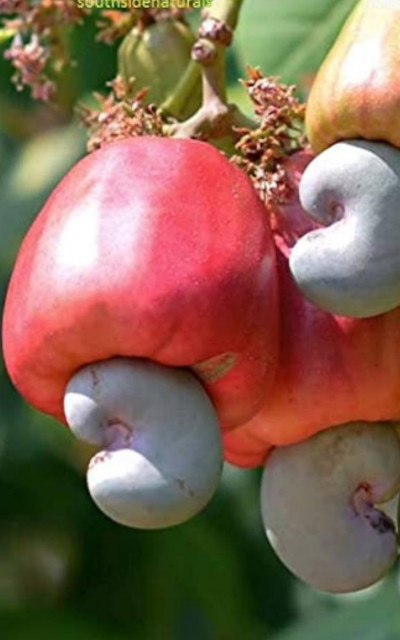 Description: Gregarious evergreen trees, to 15 m high, bark pale grey to brown, smooth with vertical striations; blaze dull pink; exudation sticky, red; branchlets glabrous. Leaves simple, alternate, somewhat crowded on twig apices.Flowers polygamous, yellow, streaked with pink, in terminal prominently bracteate panicles; calyx 5-partite, lanceolate, imbricate, deciduous, with some pubescence on outside.
Description: Gregarious evergreen trees, to 15 m high, bark pale grey to brown, smooth with vertical striations; blaze dull pink; exudation sticky, red; branchlets glabrous. Leaves simple, alternate, somewhat crowded on twig apices.Flowers polygamous, yellow, streaked with pink, in terminal prominently bracteate panicles; calyx 5-partite, lanceolate, imbricate, deciduous, with some pubescence on outside.
| Uses | oil, resins, and coatings. |
|---|---|
| Flowering and Fruiting | November-April |
| Distribution | Andaman & Nicobar Island, Andhra Pradesh, Assam, Kerala, Odisha |
| Conservation Status | Least concern |
| References | https://indiabiodiversity.org https://powo.science.kew.org |
| Family | Phyllanthaceae |
|---|---|
| Taxonomic position | Plantae>Tracheophyta>Magnoliopsida>Malpighiales>Phyllanthaceae>Aporosa>Aporosa cardiosperma |
| Common Name | Heartseed Aporosa |
| Vernacular Name | വെട്ടി |
| Habit | Tree |
| Habitat | Forest |
| Nativity | Malaysia, Indonesia, and the Philippines. |
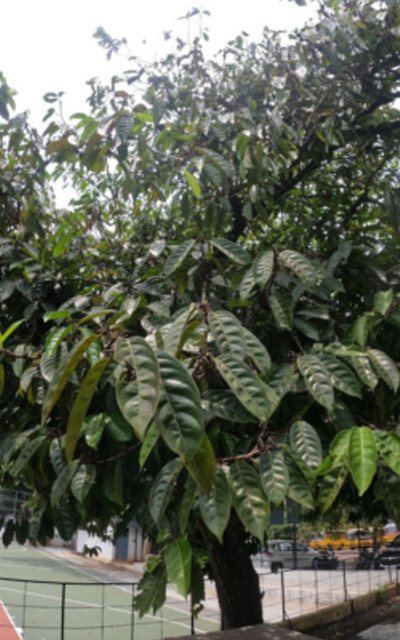 Description: Aporosa cardiosperma is native to tropical regions of Asia, particularly found in countries such as Malaysia, Indonesia, and the Philippines. It is a small tree or shrub that typically grows in lowland tropical forests. This species may have various local uses, including medicinal applications or as a source of wood or other materials, depending on local traditions and practices. However, specific information on its uses and conservation status may require further research and assessment
Description: Aporosa cardiosperma is native to tropical regions of Asia, particularly found in countries such as Malaysia, Indonesia, and the Philippines. It is a small tree or shrub that typically grows in lowland tropical forests. This species may have various local uses, including medicinal applications or as a source of wood or other materials, depending on local traditions and practices. However, specific information on its uses and conservation status may require further research and assessment
| Uses | Traditional Medicine and wood |
|---|---|
| Flowering and Fruiting | not specified |
| Distribution | Malaysia , Indonesia and Philippines |
| Conservation Status | not endangered |
| References | https://indiabiodiversity.org/ https://powo.science.kew.org |
| Family | Arecaceae |
|---|---|
| Taxonomic position | Plantae > Arecales > Arecaceae > Areca > Areca triandra |
| Common Name | Wild areca palm |
| Vernacular Name | കടൽഅടക്ക |
| Habit | Palm tree |
| Habitat | Warm and humid with consistent rainfall throughout the year. |
| Nativity | Southeast Asia |
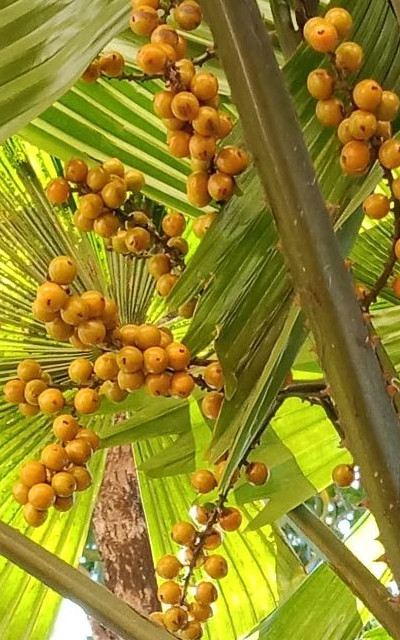 Description: Areca triandra Roxb. ex Buch.-Ham., also known as the wild areca palm, is a slow-growing, clumping palm native to Southeast Asia. Reaching 4-5 meters (13-16 feet) tall with a spread of 2.5-3 meters (8-10 feet), it thrives in the understory of tropical rainforests and coastal forests.
Description: Areca triandra Roxb. ex Buch.-Ham., also known as the wild areca palm, is a slow-growing, clumping palm native to Southeast Asia. Reaching 4-5 meters (13-16 feet) tall with a spread of 2.5-3 meters (8-10 feet), it thrives in the understory of tropical rainforests and coastal forests.
| Uses | Ornamental plant |
|---|---|
| Flowering and Fruiting | Rainy Season |
| Distribution | Southeast asia |
| Conservation Status | Not endangered |
| References | https://indiabiodiversity.org https://powo.science.kew.org |
| Family | Moraceae |
|---|---|
| Taxonomic position | Plantae> Tracheophyta> Magnoliopsida > Rosales > Moraceae >Artocarpus >Artocarpus heterophyllus Lam. |
| Common Name | Jack fruit tree |
| Vernacular Name | ചക്ക |
| Habit | Tree |
| Habitat | Tropical Asia |
| Nativity | South and Southeast Asia |
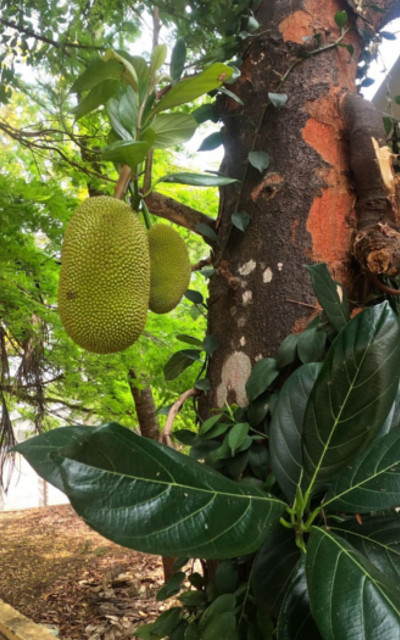 Description: Evergreen trees to 25 m high, bark 10-12 mm thick, blackish-grey, mottled with green and black, exfoliating in large thick flakes, exfoliated surface orange-red; blaze pinkish-yellow; exudation milky white latex; trunk with warty tubercles; branchlets glabrous.
Description: Evergreen trees to 25 m high, bark 10-12 mm thick, blackish-grey, mottled with green and black, exfoliating in large thick flakes, exfoliated surface orange-red; blaze pinkish-yellow; exudation milky white latex; trunk with warty tubercles; branchlets glabrous.
| Uses | The ripe fruits are sweet and eaten raw. The seeds are also eaten roasted or boiled and as vegetables |
|---|---|
| Flowering and Fruiting | March-April, June-August (Summer Season). |
| Distribution | India: Andaman & Nicobar Island, Assam, Madhya Pradesh, Maharastra, Manipur, Kerala, Odisha, Tamil Nadu |
| Conservation Status | Not Extinct |
| References | https://indiabiodiversity.org https://powo.science.kew.org |
| Family | Moraceae |
|---|---|
| Taxonomic position | Plantae>Tracheophyta>Magnoliopsida>Rosales>Moraceae >Artocarpus>Artocarpus hirsutus Lam. |
| Common Name | Wild Jack |
| Vernacular Name | ആഞ്ഞിലി ചക്ക |
| Habit | Tree |
| Habitat | Evergreen Forest |
| Nativity | India and Sri Lanka |
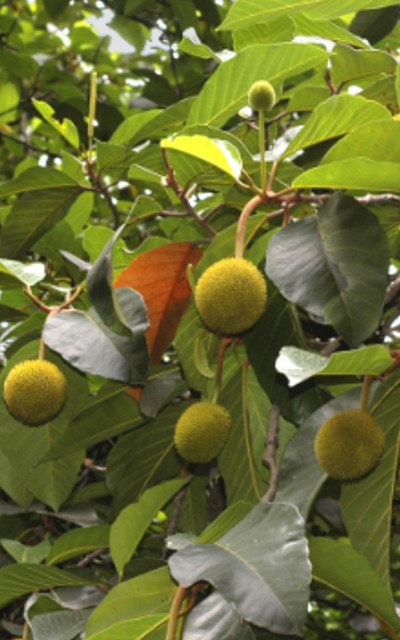 Description: Artocarpus hirsutus, commonly known as wild jack or hairy-fruited jack, is native to the Indian subcontinent, specifically to India and Sri Lanka. It is indigenous to the forests and woodlands of these regions. They are found in various types of forests, including tropical evergreen forests. It thrives in the humid and shaded conditions of these forest environments, where it plays a role in the ecosystem as a food source for wildlife and as a component of forest biodiversity.
Description: Artocarpus hirsutus, commonly known as wild jack or hairy-fruited jack, is native to the Indian subcontinent, specifically to India and Sri Lanka. It is indigenous to the forests and woodlands of these regions. They are found in various types of forests, including tropical evergreen forests. It thrives in the humid and shaded conditions of these forest environments, where it plays a role in the ecosystem as a food source for wildlife and as a component of forest biodiversity.
| Uses | Medicinal Purposes and Agroforestry |
|---|---|
| Flowering and Fruiting | April to October |
| Distribution | Indian subcontinent |
| Conservation Status | not considered to be globally threatened or endangered |
| References | https://indiabiodiversity.org/ https://powo.science.kew.org |
| Family | Meliaceae |
|---|---|
| Taxonomic position | Plantae > Sapindales> Meliaceae>Azadirachta>Azadirachta indica.A.Juss. |
| Common Name | Neem |
| Vernacular Name | ആര്യവേപ്പ് |
| Habit | Tree |
| Habitat | Dry deciduous forests, savannas, and scrub lands |
| Nativity | India, Nepal, Pakistan, Bangladesh, and Sri Lanka. |
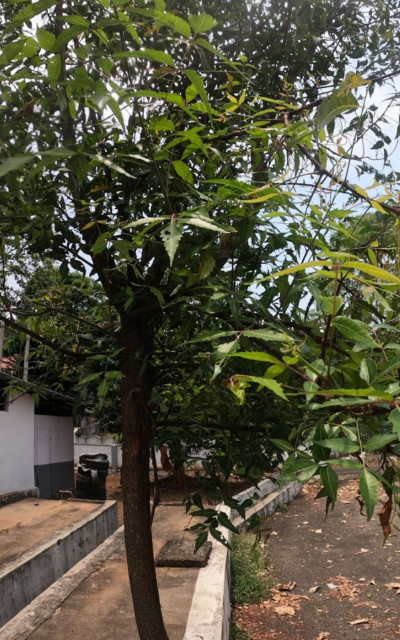 Description: Azadirachta indica is a medium to large-sized tree that can reach heights of up to 15–25 meters, occasionally taller. It has a dense, spreading crown and a straight trunk that can grow up to 1–1.5 meters in diameter. The leaves are compound, with 9–15 leaflets arranged oppositely along a central axis. The small, fragrant flowers are white and arranged in clusters, while the fruit is a green, olive-like drupe that turns yellow when ripe.
Description: Azadirachta indica is a medium to large-sized tree that can reach heights of up to 15–25 meters, occasionally taller. It has a dense, spreading crown and a straight trunk that can grow up to 1–1.5 meters in diameter. The leaves are compound, with 9–15 leaflets arranged oppositely along a central axis. The small, fragrant flowers are white and arranged in clusters, while the fruit is a green, olive-like drupe that turns yellow when ripe.
| Uses | Dental care and agricultural uses |
|---|---|
| Flowering and Fruiting | February--April. Fruiting:June--August |
| Distribution | Throughout India, except Jammu and Kashmir,Himachal Pradesh, Sikkim, Arunachal Pradesh. |
| Conservation Status | Not Evaluated. |
| References | https://indiabiodiversity.org https://powo.science.kew.org |
| Family | Fabaceae |
|---|---|
| Taxonomic position | Plantae > Fabales > Fabaceae > Bauhinia > Bauhinia purpurea L. |
| Common Name | Purple Orchid Tree |
| Vernacular Name | മന്ദാരം |
| Habit | deciduous tree |
| Habitat | open forests, scrublands, grasslands |
| Nativity | India, Nepal, Bangladesh, Myanmar, Thailand, and Malaysia. |
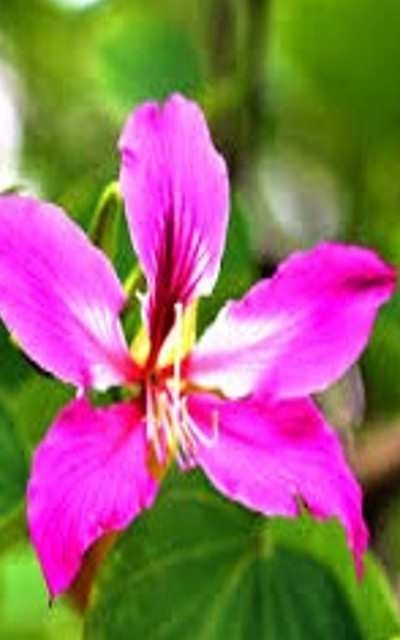 Description: Bauhinia purpurea, commonly known as the Purple Orchid Tree or Butterfly Tree, is a captivating flowering tree native to South Asia.It is known for its beautiful and showy flowers. Its unique leaves, divided into two lobes resembling butterfly wings, add to its charm. Growing to a modest height of 4 to 12 meters, it features a twisted trunk and spreading crown with drooping branches.
Description: Bauhinia purpurea, commonly known as the Purple Orchid Tree or Butterfly Tree, is a captivating flowering tree native to South Asia.It is known for its beautiful and showy flowers. Its unique leaves, divided into two lobes resembling butterfly wings, add to its charm. Growing to a modest height of 4 to 12 meters, it features a twisted trunk and spreading crown with drooping branches.
| Uses | Biodiesel,Soap and Animal Feed |
|---|---|
| Flowering and Fruiting | flowering season is typically between April and July. Around February and towards May |
| Distribution | India and Bangladesh in the west to Myanmar, Laos, Vietnam, Thailand, Cambodia, and Malaysia in the east . |
| Conservation Status | Not threatened |
| References | https://indiabiodiversity.org https://powo.science.kew.org |
| Family | Fabaceae |
|---|---|
| Taxonomic position | Plantae > Tracheophyta > Spermatophyta > Magnoliopsida > Fabales > Caesalpinia > Caesalpinia coriaria (jacq.) Willd. |
| Common Name | Divi-divi |
| Vernacular Name | ഡിവി ഡിവി |
| Habit | Medium Sized Tree |
| Habitat | Sandy beaches and shrublands |
| Nativity | Caribbean, northern South America, and parts of Central America |
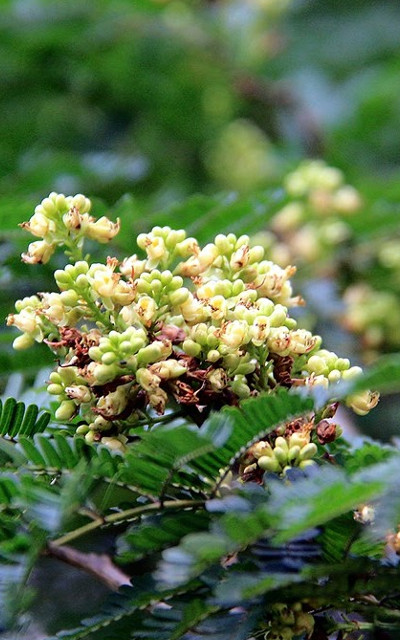 Description: Divi-divi, also spelled as Divi divi or Divi-Divi, is a common name for the tree Caesalpinia coriaria. This plant is native to various regions in the Caribbean, northern South America, and parts of Central America. The Divi-divi tree is known for its distinctive appearance, characterized by a twisted trunk and small, compound leaves. It typically grows in dry and arid coastal habitats, including sandy beaches, dunes, and coastal scrublands.
Description: Divi-divi, also spelled as Divi divi or Divi-Divi, is a common name for the tree Caesalpinia coriaria. This plant is native to various regions in the Caribbean, northern South America, and parts of Central America. The Divi-divi tree is known for its distinctive appearance, characterized by a twisted trunk and small, compound leaves. It typically grows in dry and arid coastal habitats, including sandy beaches, dunes, and coastal scrublands.
| Uses | Natural Dye and Ornamental Purposes |
|---|---|
| Flowering and Fruiting | May to September Fruiting: August to December. |
| Distribution | Caribbean, northern South America, and parts of Central America. |
| Conservation Status | It is not considered to be globally threatened or endangered. |
| References | https://indiabiodiversity.org https://powo.science.kew.org |
| Family | Rhizophoraceae |
|---|---|
| Taxonomic position | Plantae >Malpighiales >Rhizophoraceae>Carallia > Carallia brachiata (Lour.) Merr. |
| Common Name | Varangu |
| Vernacular Name | വരങ്ങു |
| Habit | Tree |
| Habitat | Freshwater Swamps |
| Nativity | India, Sri Lanka, Bangladesh, Myanmar, Thailand, Malaysia, Indonesia, the Philippines, and Papua New Guinea |
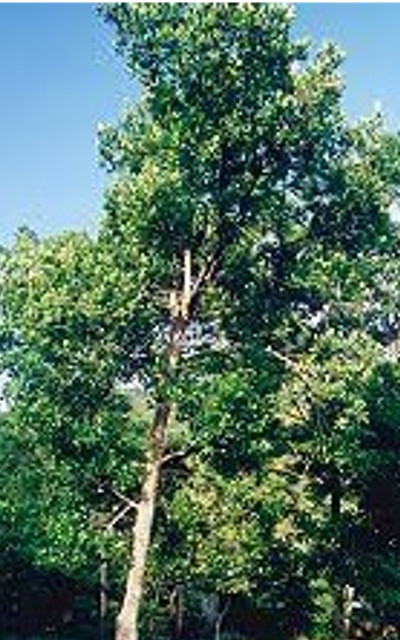 Description: Carallia brachiata is well-adapted to wetland habitats and plays a role in stabilizing soil, providing habitat for wildlife, and contributing to the biodiversity of freshwater ecosystems. Additionally, it may have cultural and economic importance for local communities, who may use its wood for carpentry and its bark or leaves for traditional medicinal purposes.
Description: Carallia brachiata is well-adapted to wetland habitats and plays a role in stabilizing soil, providing habitat for wildlife, and contributing to the biodiversity of freshwater ecosystems. Additionally, it may have cultural and economic importance for local communities, who may use its wood for carpentry and its bark or leaves for traditional medicinal purposes.
| Uses | Traditional Medicine and Landscaping |
|---|---|
| Flowering and Fruiting | October-April |
| Distribution | various regions of Asia |
| Conservation Status | Degradation in quality of remaining mangroves |
| References | https://indiabiodiversity.org https://powo.science.kew.org |
| Family | Fabaceae |
|---|---|
| Taxonomic position | Plantae > Tracheophyta > Equisetopsida > Fabales > Fabaceae > Cassia > Cassia fistula L. |
| Common Name | Golden shower tree |
| Vernacular Name | കണിക്കൊന്ന |
| Habit | Tree |
| Habitat | Humid valley forests, open forests, hill slopes, open areas |
| Nativity | Native |
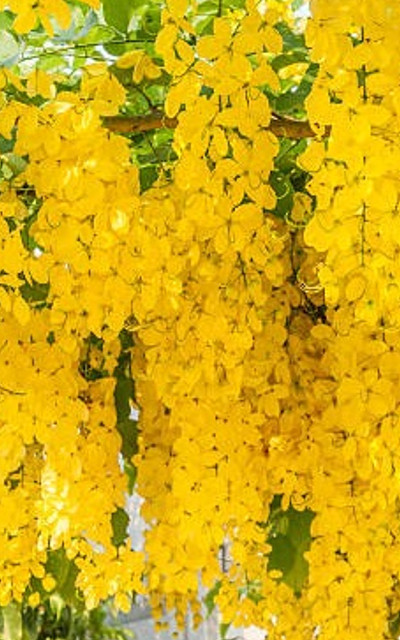 Description: Cassia plants are known for their beautiful flowers and many species are popular ornamental plants. New leaflets copper brown in colour, drooping. Leafless when flowers, Flowers fragrant, golden yellow, drooping in long clusters. Dark brown fruit long and cylindrical resembling drumstick.
Description: Cassia plants are known for their beautiful flowers and many species are popular ornamental plants. New leaflets copper brown in colour, drooping. Leafless when flowers, Flowers fragrant, golden yellow, drooping in long clusters. Dark brown fruit long and cylindrical resembling drumstick.
| Uses | Bark extensively used for tanning and dyeing. Beautiful yellow cascading flower clusters. Also used for pooja, particularly during the Vishu festival in Kerala. |
|---|---|
| Flowering and Fruiting | Flowers bloom during March to July . Fruits ripe in cold season |
| Distribution | Throughout India, except Jammu & Kashmir, Himachal Pradesh, Sikkim, Arunachal Pradesh |
| Conservation Status | Not Evaluated |
| References | https://indiabiodiversity.org https://powo.science.kew.org |
| Family | Meliaceae |
|---|---|
| Taxonomic position | Planta >Magnoliophyta > Magnoliopsida> Sapindales> Meliaceae > Dysoxylum> Dysoxylum malabaricum Bedd. ex C. DC. |
| Common Name | White Cedar |
| Vernacular Name | വെള്ളഅകിൽ |
| Habit | Tree |
| Habitat | Abundant rainfall, high humidity, and lush vegetation. |
| Nativity | Western Ghats mountain range in India. |
 Description: The Dysoxylum malabaricum, also known as white cedar, is a towering evergreen tree native to the Western Ghats of India. It reaches up to 35 meters tall with a straight trunk and rough, grayish-brown bark. Found in evergreen forests between 200 and 1200 meters elevation, it belongs to the mahogany family (Meliaceae) and is valued for its strong, termite-resistant wood. Sadly, this majestic tree is listed as endangered due to habitat loss.
Description: The Dysoxylum malabaricum, also known as white cedar, is a towering evergreen tree native to the Western Ghats of India. It reaches up to 35 meters tall with a straight trunk and rough, grayish-brown bark. Found in evergreen forests between 200 and 1200 meters elevation, it belongs to the mahogany family (Meliaceae) and is valued for its strong, termite-resistant wood. Sadly, this majestic tree is listed as endangered due to habitat loss.
| Uses | Medicine , Insecticide |
|---|---|
| Flowering and Fruiting | February-June |
| Distribution | Western Ghats region of India. |
| Conservation Status | not endangered |
| References | https://indiabiodiversity.org https://powo.science.kew.org |
| Family | Moraceae |
|---|---|
| Taxonomic position | Plantae>Tracheophyta>Magnoliopsida>Rosales>Moraceae>Ficus>Ficus auriculata Lour |
| Common Name | Roxburgh Fig |
| Vernacular Name | വലിയ അത്തി |
| Habit | Tree |
| Habitat | Moist deciduous forests. |
| Nativity | Asia |
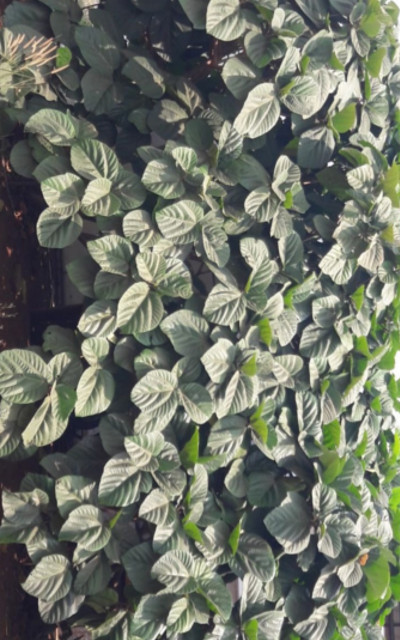 Description: Small spreading tree. Trunk usually short, bark grayish dark brown. Leaf blade suborbicular, acuminate at apex, cordate or rounded at base, pubescent beneath, glabrous above, chartaceous, basal nerves 6-7, lateral nerves 4-5, tertiary nerves transverse and parallel. Figs obconic, with longitudinal ridges, pubescent brown, white spotted, basal bracts 3, triangular, orifice sunken and covered by 6 triangular apical bracts. Syconus fruit.
Description: Small spreading tree. Trunk usually short, bark grayish dark brown. Leaf blade suborbicular, acuminate at apex, cordate or rounded at base, pubescent beneath, glabrous above, chartaceous, basal nerves 6-7, lateral nerves 4-5, tertiary nerves transverse and parallel. Figs obconic, with longitudinal ridges, pubescent brown, white spotted, basal bracts 3, triangular, orifice sunken and covered by 6 triangular apical bracts. Syconus fruit.
| Uses | Fruits are edible. Bark yields a coarse fiber and is used in the preparation of medicine for hydrophobia. Leaves used as fodder for cattle. |
|---|---|
| Flowering and Fruiting | Throughout the year |
| Distribution | Assam, Punjab; Myanmar, Nepal, Pakistan, Thailand, Vietnam |
| Conservation Status | Not evaluated |
| References | https://indiabiodiversity.org https://powo.science.kew.org |
| Family | Moraceae |
|---|---|
| Taxonomic position | Plantae > Tracheophyta > Magnoliopsida > Rosales > Moraceae > Ficus > Ficus tinctoria > Ficus tinctoria gibbosa (Bl.) Corner |
| Common Name | Dye Fig |
| Vernacular Name | അത്തി |
| Habit | Tree |
| Habitat | Evergreen to moist deciduous forests. |
| Nativity | Southeast Asia and Malesia. |
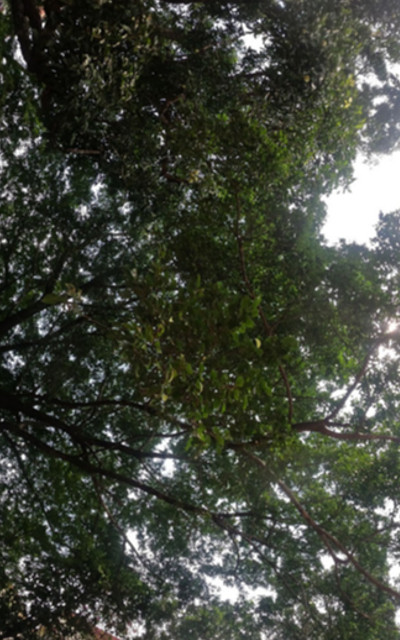 Description: Ficus tinctoria starts life as an epiphyte, growing on other trees for support. However, as it matures, its roots can grow down and strangle the host tree, becoming a hemiepiphyte (partially epiphytic).Usually a hemi epiphyte i.e. usually young plants are epiphytic and later when the roots come in contact with the ground the it encircles the host tree often resulting in death of host tree.
Description: Ficus tinctoria starts life as an epiphyte, growing on other trees for support. However, as it matures, its roots can grow down and strangle the host tree, becoming a hemiepiphyte (partially epiphytic).Usually a hemi epiphyte i.e. usually young plants are epiphytic and later when the roots come in contact with the ground the it encircles the host tree often resulting in death of host tree.
| Uses | Leaves used to polish ivory. Bark and root used as medicine against diarrhoea, menorrhagia, constipation, fever and astringent. |
|---|---|
| Flowering and Fruiting | throughout the year in some tropical regions with warm and humid conditions. |
| Distribution | Andhra Pradesh, Assam, Kerala, Madhya Pradesh |
| Conservation Status | Least Concern |
| References | https://indiabiodiversity.org https://powo.science.kew.org |
| Family | Lytheraceae |
|---|---|
| Taxonomic position | Plantae >Tracheophyta >Magnoliopsida >Myrtales >Lythraceae >Lagerstroemia >Lagerstroemia speciosa (L.) Pers. |
| Common Name | Manimaruthu |
| Vernacular Name | നെയ്ത്തില |
| Habit | Medium tree |
| Habitat | Forested areas |
| Nativity | Tropical and subtropical Asia |
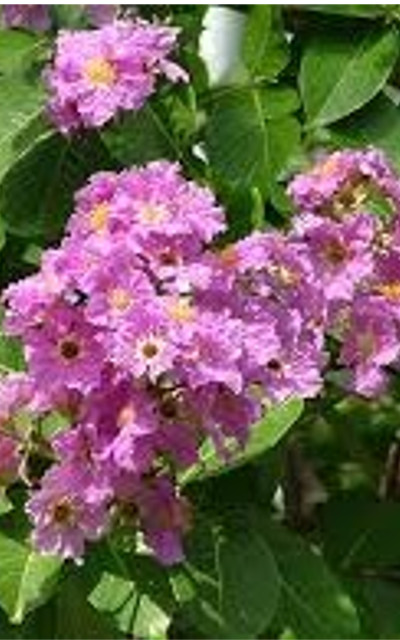 Description: Lagerstroemia speciosa is a large, flowering tree native to tropical and subtropical Asia, particularly found in countries such as India, Myanmar, Thailand, and the Philippines. It is known for its showy, pink, or purple flowers and attractive bark, making it a popular ornamental tree in gardens and landscapes. Additionally, various parts of the Banaba tree have been used in traditional medicine for their potential health benefits.
Description: Lagerstroemia speciosa is a large, flowering tree native to tropical and subtropical Asia, particularly found in countries such as India, Myanmar, Thailand, and the Philippines. It is known for its showy, pink, or purple flowers and attractive bark, making it a popular ornamental tree in gardens and landscapes. Additionally, various parts of the Banaba tree have been used in traditional medicine for their potential health benefits.
| Uses | Ornamental and Medicinal Purposes |
|---|---|
| Flowering | April to June |
| Fruiting | August to October |
| Distribution | Philippine, Thailand and Burma |
| Conservation Status | it is not considered to be globally threatened or endangered. |
| References | https://indiabiodiversity.org https://powo.science.kew.org |
| Family | Euphorbiaceae |
|---|---|
| Taxonomic position | plantae>Tracheophyta>Magnoliopsida>Malpighiales>Euphorbiaceae >Marcaranga peltata (Roxb.) Mull.Arg |
| Common Name | Podini |
| Vernacular Name | വട്ട |
| Habit | Tree |
| Habitat | Tropical forests and moist lands |
| Nativity | Central and North America |
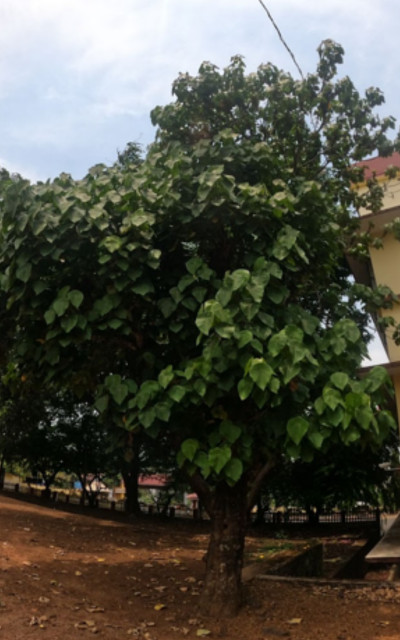 Description: Marcaranga peltata is native to tropical regions of the Americas, particularly in Central America and northern South America. It typically grows in moist, shaded habitats such as tropical forests and riparian zones. The tree is characterized by its large, umbrella-like leaves and is valued for its ornamental foliage. Additionally, it has been used in traditional medicine by indigenous communities for various purposes.
Description: Marcaranga peltata is native to tropical regions of the Americas, particularly in Central America and northern South America. It typically grows in moist, shaded habitats such as tropical forests and riparian zones. The tree is characterized by its large, umbrella-like leaves and is valued for its ornamental foliage. Additionally, it has been used in traditional medicine by indigenous communities for various purposes.
| Uses | Medicinal and Ornamental Purposes |
|---|---|
| Flowering and Fruiting | Throughout the year |
| Distribution | Central and North America |
| Conservation Status | not endangered |
| References | https://indiabiodiversity.org https://powo.science.kew.org |
| Family | Anacardiaceae |
|---|---|
| Taxonomic position | Plantae > Tracheophyta > Magnoliopsida > Sapindales > Anacardiaceae > Mangifera > Mangifera indica L. |
| Common Name | Mango tree |
| Vernacular Name | മാവ് |
| Habit | Large tree |
| Habitat | Terrestrial habitat. |
| Nativity | Northwestern Myanmar, Bangladesh, and northeastern India. |
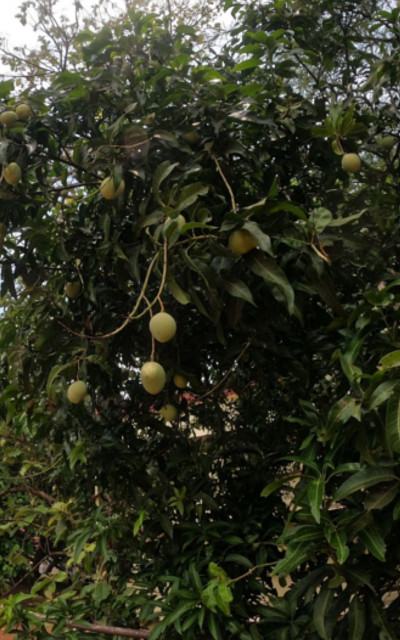 Description: The name mango, almost identical in countless languages, is derived from Tamil, and was transferred to the West by the Portuguese. The general term for "mango" in Tamil is mamaran, but the fruit is usually referred to either as manpalam (also transcribed mambazham for "ripe mango fruit" or mangai for "unripe mango fruit". The term 'mangai' seems to have been picked up by Portuguese sailors who encountered the fruits at harbours and markets.
Description: The name mango, almost identical in countless languages, is derived from Tamil, and was transferred to the West by the Portuguese. The general term for "mango" in Tamil is mamaran, but the fruit is usually referred to either as manpalam (also transcribed mambazham for "ripe mango fruit" or mangai for "unripe mango fruit". The term 'mangai' seems to have been picked up by Portuguese sailors who encountered the fruits at harbours and markets.
| Uses | Various parts of plant are used as a antiseptic, astringent, diaphoretic, stomachic, vermifuge, tonic, laxative and diuretic and to treat diarrhea, dysentery, anaemia, asthma, bronchitis, cough, hypertension, insomnia, rheumatism, toothache, leucorrhoea, haemorrhage and piles. It is also edible. |
|---|---|
| Flowering and Fruiting | January-May |
| Distribution | India and myanmar |
| Conservation Status | DD (data deficient) |
| References | https://indiabiodiversity.org https://powo.science.kew.org |
| Family | Sapotaceae. |
|---|---|
| Taxonomic position | Plantae > Ericales >Sapotaceae > Manilkara > Manilkara zapota L. |
| Common Name | chiku |
| Vernacular Name | സപ്പോട്ട |
| Habit | tree |
| Habitat | home gardens, orchards, and plantations for their edible fruits |
| Nativity | Mexico, Central America, and northern parts of South America. |
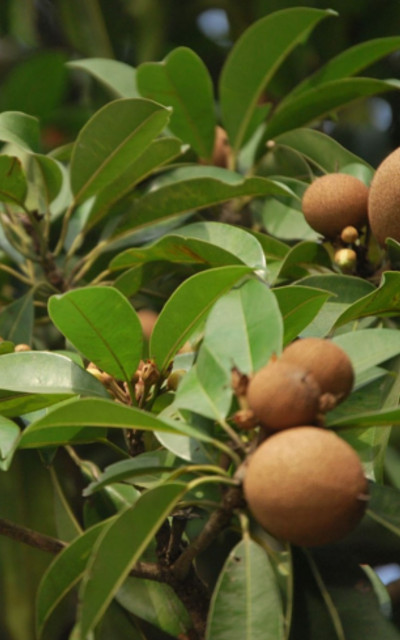 Description: Sapodilla is a medium-sized tree that can reach heights of up to 30 meters. It has a dense crown of glossy, oval-shaped leaves. The bark is rough and dark brown. The tree produces small, inconspicuous flowers that are cream-colored and bell-shaped. The fruits, known as sapodillas, are ovoid or ellipsoid in shape, with a rough, sandpapery surface when ripe. The flesh of the fruit is sweet, aromatic, and has a texture similar to that of a pear.
Description: Sapodilla is a medium-sized tree that can reach heights of up to 30 meters. It has a dense crown of glossy, oval-shaped leaves. The bark is rough and dark brown. The tree produces small, inconspicuous flowers that are cream-colored and bell-shaped. The fruits, known as sapodillas, are ovoid or ellipsoid in shape, with a rough, sandpapery surface when ripe. The flesh of the fruit is sweet, aromatic, and has a texture similar to that of a pear.
| Uses | edible and medicinal plant |
|---|---|
| Flowering and Fruiting | throughout the year |
| Distribution | Mexico and Central America. |
| Conservation Status | is not listed on conservation status of threatened species |
| References | https://indiabiodiversity.org https://powo.science.kew.org |
| Family | Moraceae |
|---|---|
| Taxonomic position | Plantae>Tracheophyta>Magnoliopsida>Sapindales>Meliaceae> Swietenia>Swietenia macrophylla G. King |
| Common Name | white mulberry |
| Vernacular Name | മൾബറി |
| Habit | Tree |
| Habitat | Riverbanks, and disturbed areas. |
| Nativity | Eastern and central China, |
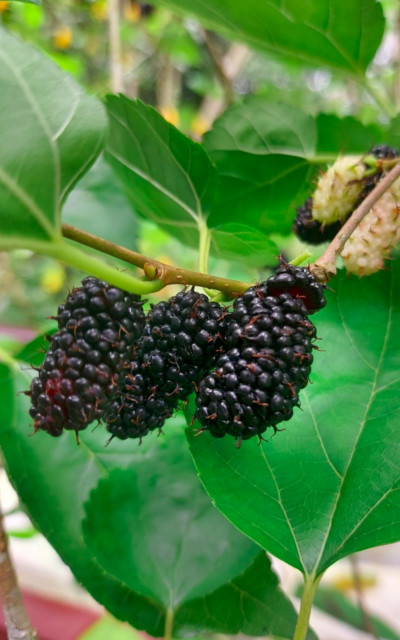 Description: Morus alba, commonly known as the white mulberry, is a deciduous tree belonging to the Moraceae family. Morus alba typically grows to a height of 10 to 20 meters . They are typically glossy green on the upper surface and paler on the underside. Native to eastern and central China. It has been widely cultivated in many parts of the world, including Europe, North America, and parts of Asia and Africa. The fruit is edible and can be eaten fresh or used in cooking, baking, jams, and preserves. White mulberry leaves are the primary food source for silkworms (Bombyx mori), which are used in silk production. The leaves are rich in nutrients and serve as an important component of sericulture
Description: Morus alba, commonly known as the white mulberry, is a deciduous tree belonging to the Moraceae family. Morus alba typically grows to a height of 10 to 20 meters . They are typically glossy green on the upper surface and paler on the underside. Native to eastern and central China. It has been widely cultivated in many parts of the world, including Europe, North America, and parts of Asia and Africa. The fruit is edible and can be eaten fresh or used in cooking, baking, jams, and preserves. White mulberry leaves are the primary food source for silkworms (Bombyx mori), which are used in silk production. The leaves are rich in nutrients and serve as an important component of sericulture
| Uses | Edible fruit and traditional medicine |
|---|---|
| Flowering and Fruiting | Late March to May |
| Distribution | Europe, North America, and parts of Asia and Africa. |
| Conservation Status | Is not listed the IUCN Red List of Threatened Species. |
| References | https://indiabiodiversity.org https://powo.science.kew.org |
| Family | Sapindaceae |
|---|---|
| Taxonomic position | Plantae>Tracheophyta>Magnoliopsida>Sapindales> Sapindaceae>Nephelium>Nephelium lappaceum L. |
| Common Name | Rhambutan |
| Vernacular Name | റംബൂട്ടാൻ |
| Habit | Small Tree |
| Habitat | Tropical regions of South East Asia |
| Nativity | Southeast Asia |
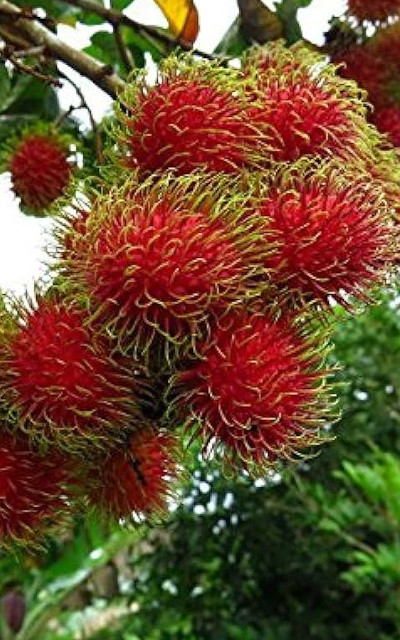 Description: The Nephelium lappaceum, better known as the rambutan, is a delightful tropical fruit tree native to Southeast Asia. This evergreen can reach up to 25 meters tall, boasting a crown of glossy green leaves. Its star attraction is the rambutan fruit itself: round or oval and covered in soft, pliable spines. Underneath the spiky red exterior lies a juicy, white or pinkish flesh with a refreshing, sweet-tart flavor, making it a popular treat enjoyed fresh, canned, or even dried.
Description: The Nephelium lappaceum, better known as the rambutan, is a delightful tropical fruit tree native to Southeast Asia. This evergreen can reach up to 25 meters tall, boasting a crown of glossy green leaves. Its star attraction is the rambutan fruit itself: round or oval and covered in soft, pliable spines. Underneath the spiky red exterior lies a juicy, white or pinkish flesh with a refreshing, sweet-tart flavor, making it a popular treat enjoyed fresh, canned, or even dried.
| Uses | The fruit is edible , used in folk medicine. The wood of the rambutan tree can be used for some construction purposes. |
|---|---|
| Flowering and Fruiting | Flowers once or twice a year (March to May & June to November) Fruiting: Mid-May to end of June |
| Distribution | Malaysia, Indonesia, and Thailand |
| Conservation Status | Least Concern |
| References | https://indiabiodiversity.org https://powo.science.kew.org |
| Family | Phyllanthaceae |
|---|---|
| Taxonomic position | Plantae> Tracheophyta>Equisetopsida >Malpighiales >Phyllanthaceae> Phyllanthus> Phyllanthus emblica L. |
| Common Name | Indian gooseberry |
| Vernacular Name | നെല്ലി |
| Habit | medium-sized tree |
| Habitat | Hilly areas, as well as in mixed deciduous forests. |
| Nativity | India, Nepal, Sri Lanka, and Bangladesh. |
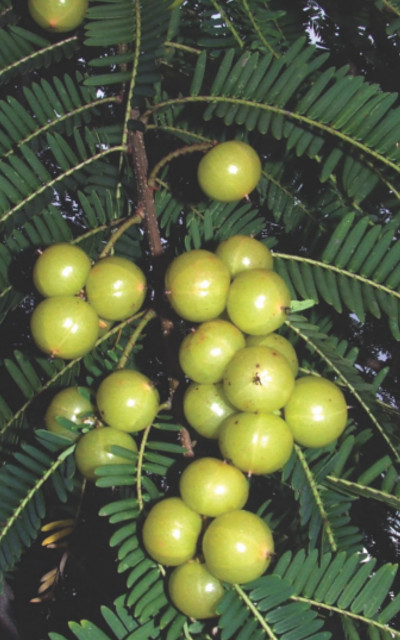 Description: Phyllanthus emblica is a medium-sized tree that can reach heights of up to 18 meters (59 feet). It has a spreading crown and often has crooked branches.The leaves are simple, alternate, and linear-oblong in shape, with a pale green color. They are clustered towards the ends of branches.The flowers are small, greenish-yellow and inconspicuous. They are borne in clusters along the branches. The fruits are known as amla or Indian gooseberry, is round, greenish-yellow, and about 1-2 centimeters in diameter. It has a sour taste and is rich in vitamin C.
Description: Phyllanthus emblica is a medium-sized tree that can reach heights of up to 18 meters (59 feet). It has a spreading crown and often has crooked branches.The leaves are simple, alternate, and linear-oblong in shape, with a pale green color. They are clustered towards the ends of branches.The flowers are small, greenish-yellow and inconspicuous. They are borne in clusters along the branches. The fruits are known as amla or Indian gooseberry, is round, greenish-yellow, and about 1-2 centimeters in diameter. It has a sour taste and is rich in vitamin C.
| Uses | Edible Fruit and Cosmetic |
|---|---|
| Flowering and Fruiting | February and April |
| Distribution | India, Nepal, Sri-Lanka, and Bangladesh. |
| Conservation Status | Not Threatened |
| References | https://indiabiodiversity.org https://powo.science.kew.org |
| Family | Apocynaceae |
|---|---|
| Taxonomic position | Plantae > Tracheophyta > Magnoliopsida > Gentianales > Apocynaceace > Plumeria > Plumeria rubra L |
| Common Name | Chempakappala |
| Vernacular Name | അരളി |
| Habit | Tree |
| Habitat | Forested areas, open places |
| Nativity | Central America or the Caribbean Islands |
 Description: Plumeria rubra, also widely known as frangipani, is a stunning tropical tree or shrub prized for its beauty and fragrance. Large, glossy, deep green leaves that are oblong or elliptical in shape. They grow in whorls at the tips of branches.Plumeria rubra is famous for its large, clusters of fragrant flowers.
Description: Plumeria rubra, also widely known as frangipani, is a stunning tropical tree or shrub prized for its beauty and fragrance. Large, glossy, deep green leaves that are oblong or elliptical in shape. They grow in whorls at the tips of branches.Plumeria rubra is famous for its large, clusters of fragrant flowers.
| Uses | Ornamental, Fragrance, Traditional medicine |
|---|---|
| Flowering and Fruiting | Plumeria rubra flowers abundantly throughout summer and fall. |
| Distribution | Assam, Bihar, Gujarat, Uttar Pradesh; West Indies |
| Conservation Status | Least concern |
| References | https://indiabiodiversity.org https://powo.science.kew.org |
| Family | Anonaceae |
|---|---|
| Taxonomic position | Plantae>Tracheophyta>Magnoliopsida>Magnoliales>Annonaceae>Polyalthia>Polyalthia longifolia (Sonn.) Thwaites |
| Common Name | Aranamaram |
| Vernacular Name | അരണമരം |
| Habit | Tree |
| Habitat | Evergreen forest, cultivated |
| Nativity | southern India and Sri Lanka |
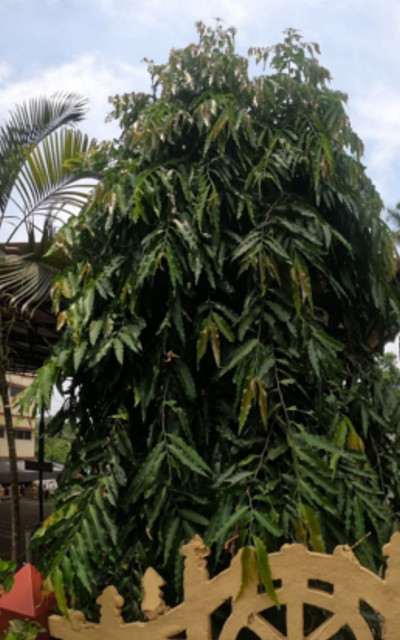 Description: Polyalthia longifolia (Sonn.) Thwaites, also known as the Ashoka tree, is a tall and handsome evergreen tree native to India. It's a popular choice for cultivation due to its beauty and potential medicinal properties. The plant boasts fragrant yellow flowers and dark green, glossy leaves. Traditionally, different parts of the Ashoka tree have been used in Ayurvedic medicine to treat various ailments, although scientific evidence for these uses is still being explored.
Description: Polyalthia longifolia (Sonn.) Thwaites, also known as the Ashoka tree, is a tall and handsome evergreen tree native to India. It's a popular choice for cultivation due to its beauty and potential medicinal properties. The plant boasts fragrant yellow flowers and dark green, glossy leaves. Traditionally, different parts of the Ashoka tree have been used in Ayurvedic medicine to treat various ailments, although scientific evidence for these uses is still being explored.
| Uses | Cultivated in gardens and roadsides as avenue tree. Wood used for packing cases, boxes etc. |
|---|---|
| Flowering and Fruiting | March-May/July-September |
| Distribution | India: Assam, Maharastra, Uttar Pradesh, West Bengal; South East Asia |
| Conservation Status | Not evaluated |
| References | https://indiabiodiversity.org https://powo.science.kew.org |
| Family | Fabaceae |
|---|---|
| Taxonomic position | Plantae > Fabales > Fabaceae > Pongamia (mz > Pongamia pinnata |
| Common Name | Indian Beech |
| Vernacular Name | ഉങ്ങ് |
| Habit | Briefly deciduous tree |
| Habitat | Warm temperature with preferred rainfall |
| Nativity | Southeast Asia,Australia,Pacific Islands |
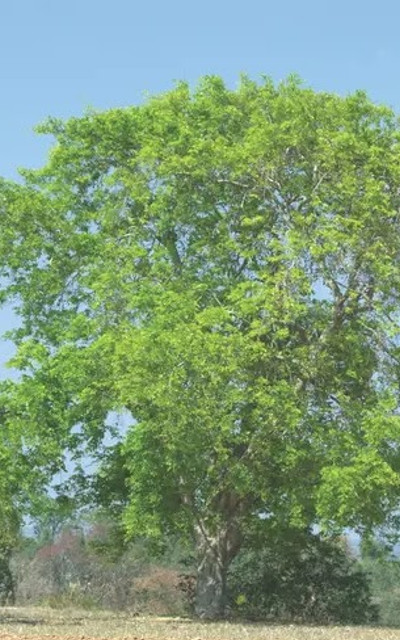 Description: Pongamia pinnata, also known as the Indian beech, karanj, or karanja oil tree, is a medium-sized, evergreen or briefly deciduous tree in the legume family (Fabaceae). It's native to Southeast Asia and widely cultivated in other tropical and subtropical regions.Fragrant, pea-shaped flowers with purple or violet petals, borne in drooping clusters at the base of the leaves. Overall, Pongamia pinnata is a resilient tree with attractive features that make it suitable for various purposes.
Description: Pongamia pinnata, also known as the Indian beech, karanj, or karanja oil tree, is a medium-sized, evergreen or briefly deciduous tree in the legume family (Fabaceae). It's native to Southeast Asia and widely cultivated in other tropical and subtropical regions.Fragrant, pea-shaped flowers with purple or violet petals, borne in drooping clusters at the base of the leaves. Overall, Pongamia pinnata is a resilient tree with attractive features that make it suitable for various purposes.
| Uses | Biodiesel,Soap and Animal Feed |
|---|---|
| Flowering and Fruiting | flowering season is typically between April and July. Fruit ripening occurs from February to May |
| Distribution | India, Nepal, Bangladesh, Pakistan, and Sri Lanka |
| Conservation Status | |
| References | https://indiabiodiversity.org https://powo.science.kew.org |
| Family | Myrtaceae |
|---|---|
| Taxonomic position | Plantae > Tracheophyta> Magnoliopsida > Rosidae >Myrtales > Myrtaceae >Psidium > Psidium guajavaL. |
| Common Name | guava |
| Vernacular Name | പേര |
| Habit | Shrub or Small Tree |
| Habitat | Warm climates |
| Nativity | tropical and subtropical regions of the Americas |
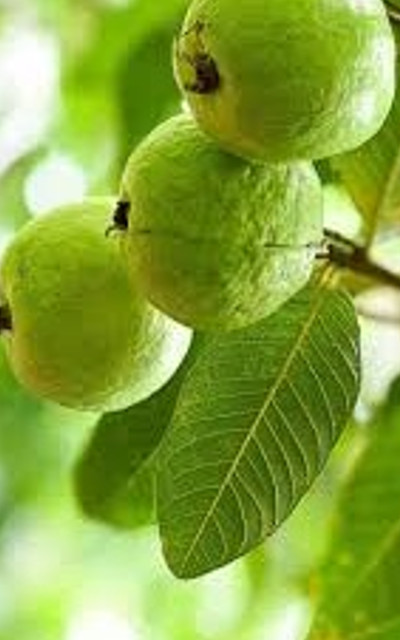 Description: Psidium gujava, also known as the common guava, is a delicious and versatile tropical fruit tree with a twist on its size.It has a shallow root system. Guava produces low drooping branches from the base and suckers from the roots. The trunk is slender, 20 cm in diameter, covered with a smooth green to red brown bark that peels off in thin flakes.
Description: Psidium gujava, also known as the common guava, is a delicious and versatile tropical fruit tree with a twist on its size.It has a shallow root system. Guava produces low drooping branches from the base and suckers from the roots. The trunk is slender, 20 cm in diameter, covered with a smooth green to red brown bark that peels off in thin flakes.
| Uses | potential medicinal benefits, and some other practical uses. |
|---|---|
| Flowering and Fruiting | Psidium gujava's flowering and fruiting habits make it a productive and rewarding plant, offering a continuous supply of delicious fruit in many regions. |
| Distribution | Southeast Asia , Africa , Oceania , Southern Asia , Southern Europe . |
| Conservation Status | Least Concern (LC) |
| References | https://indiabiodiversity.org https://powo.science.kew.org |
| Family | Simaroubaceae |
|---|---|
| Taxonomic position | Plantae >Tracheophyta > Magnoliopsida > Rosids > Sapindales > Simaroubaceae > Simarouba > Simarouba glauca DC. |
| Common Name | Paradise Tree |
| Vernacular Name | ലക്ഷ്മിതരു |
| Habit | small to medium-sized tree |
| Habitat | Well-Drained Soils |
| Nativity | southern Florida and the Caribbean islands |
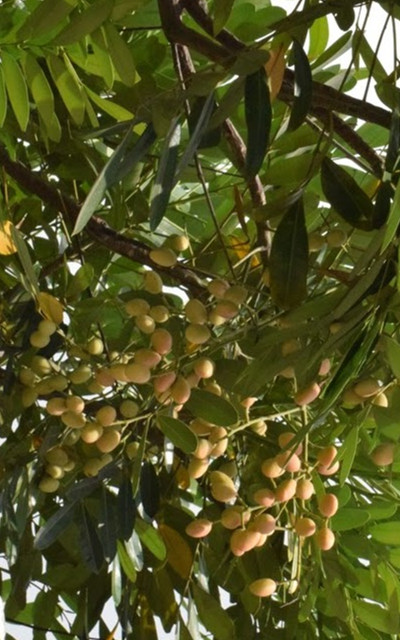 Description: Simarouba glauca is a beautiful and adaptable tree with a unique combination of ornamental and potential economic value. While not facing immediate extinction threats, conservation efforts are important to ensure its continued survival in its natural habitat.
Description: Simarouba glauca is a beautiful and adaptable tree with a unique combination of ornamental and potential economic value. While not facing immediate extinction threats, conservation efforts are important to ensure its continued survival in its natural habitat.
| Uses | Traditional Medicine and ornamental uses |
|---|---|
| Flowering and Fruiting | while Simarouba glauca can reproduce sexually, its infrequent flowering and fruiting, combined with the long maturation period of its fruits, contribute to its unique reproductive strategy. |
| Distribution | tropical and subtropical regions of the Americas |
| Conservation Status | Least concern |
| References | https://indiabiodiversity.org https://powo.science.kew.org |
| Family | Anacardiaceae |
|---|---|
| Taxonomic position | Plantae>Tracheophyta>Magnoliopsida>Sapindales>Anacardiaceae>Spondias>Spondias pinnata (L. f.) Kurz |
| Common Name | Ambazham |
| Vernacular Name | അമ്പഴം. |
| Habit | Tree |
| Habitat | Deciduous forests, open spots. |
| Nativity | Native. |
 Description: A middle sized deciduous tree with a pleasant aromatic acidic smell, reaching about 9 - 18 m in height. It remains leafless during winter season. Leaves are Compound with 3 pairs of opposite leaflets. The flowers are greyish-white or pale-yellow. Fruit is drupe about an inch long, acidic and aromatic. It becomes greenish yellow when ripe
Description: A middle sized deciduous tree with a pleasant aromatic acidic smell, reaching about 9 - 18 m in height. It remains leafless during winter season. Leaves are Compound with 3 pairs of opposite leaflets. The flowers are greyish-white or pale-yellow. Fruit is drupe about an inch long, acidic and aromatic. It becomes greenish yellow when ripe
| Uses | Fruits made into pickles and chutney and is a good thirst quencher. Fallen fruits relished by cattle, deer and boar. |
|---|---|
| Flowering and Fruiting | March-December. |
| Distribution | Global Distribution India: Assam, Madhya Pradesh, Punjab |
| Conservation Status | Not Evaluated |
| References | https://indiabiodiversity.org https://powo.science.kew.org |
| Family | Loganiaceae |
|---|---|
| Taxonomic position | Plantae > Gentianales > Loganiaceae > Strychnos > Strychnos nux-vomica L. |
| Common Name | Strychnine tree |
| Vernacular Name | കാഞ്ഞിരം |
| Habit | Evergreen Tree |
| Habitat | warm climates with high humidity |
| Nativity | India and Southeast Asia |
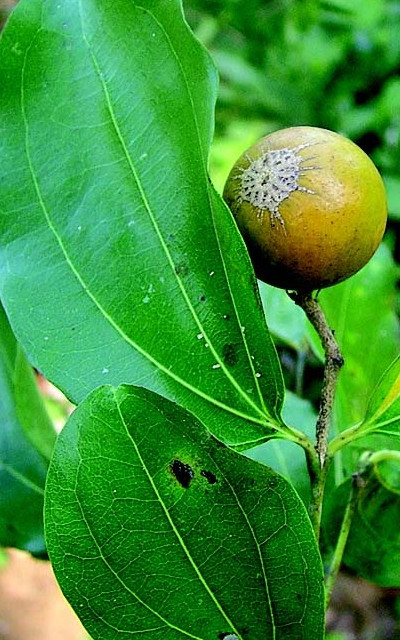 Description: Strychnos nux-vomica, also known as the strychnine tree, nux vomica, or kuchila, is a medium-sized evergreen tree native to Southeast Asia, particularly India and Sri Lanka. Round or slightly oval, resembling a small orange or berry.Each fruit contains 1-4 round, flattened seeds with a hard, brown shell. These seeds contain the highly toxic alkaloid strychnine.
Description: Strychnos nux-vomica, also known as the strychnine tree, nux vomica, or kuchila, is a medium-sized evergreen tree native to Southeast Asia, particularly India and Sri Lanka. Round or slightly oval, resembling a small orange or berry.Each fruit contains 1-4 round, flattened seeds with a hard, brown shell. These seeds contain the highly toxic alkaloid strychnine.
| Uses | Highly toxic and Modern medicine , Homeopathy |
|---|---|
| Flowering and Fruiting | blooms throughout the year , Fruit development takes time after flowering |
| Distribution | India , Sri Lanka |
| Conservation Status | Not known |
| References | https://indiabiodiversity.org https://powo.science.kew.org |
| Family | Meliaceae |
|---|---|
| Taxonomic position | Plantae >Tracheophyta >Magnoliopsida >Meliatae >Sapindales > Meliaceae >Swietenia > Swietenia macrophylla G. |
| Common Name | Mahogany |
| Vernacular Name | മഹാഗണി |
| Habit | Tree |
| Habitat | Prefers well-drained soils |
| Nativity | tropical regions of the Americas |
 Description: Swietenia macrophylla, also known as big-leaf mahogany, is a tropical giant with a regal bearing and a checkered past. It is a tall evergreen tree with hard wood that turns reddish brown at maturity. The leaflets of each large leaf are arranged like a feather, but there is no terminal leaflet.
Description: Swietenia macrophylla, also known as big-leaf mahogany, is a tropical giant with a regal bearing and a checkered past. It is a tall evergreen tree with hard wood that turns reddish brown at maturity. The leaflets of each large leaf are arranged like a feather, but there is no terminal leaflet.
| Uses | Furniture , Musical Instruments |
|---|---|
| Flowering and Fruiting | April-March |
| Distribution | southern Mexico , Central America and the Caribbean islands down to northern South America. |
| Conservation Status | Vulnerable. |
| References | https://indiabiodiversity.org https://powo.science.kew.org |
| Family | Myrtaceae |
|---|---|
| Taxonomic position | Plantae > Myrtales> Myrtaceae> Syzygium> Syzygium cumini(L.) Skeels |
| Common Name | Jamun |
| Vernacular Name | ഞാവൽ |
| Habit | Tree |
| Habitat | Subtropical forests and wetlands |
| Nativity | Indian subcontinent and Southeast Asia |
 Description: Syzygium cumini, commonly known as Java plum or Jamun, is a tropical fruit-bearing tree native to the Indian subcontinent, Southeast Asia, and surrounding regions. It belongs to the Myrtaceae family and is widely cultivated for its edible fruit. It has a sweet and tangy flavor and is often used to make jams, jellies, juices, and desserts. In addition to its culinary uses, Jamun fruit is also valued for its potential health benefits.
Description: Syzygium cumini, commonly known as Java plum or Jamun, is a tropical fruit-bearing tree native to the Indian subcontinent, Southeast Asia, and surrounding regions. It belongs to the Myrtaceae family and is widely cultivated for its edible fruit. It has a sweet and tangy flavor and is often used to make jams, jellies, juices, and desserts. In addition to its culinary uses, Jamun fruit is also valued for its potential health benefits.
| Uses | Edible fruit and Traditional Medicine |
|---|---|
| Flowering and Fruiting | March to May and May to July |
| Distribution | India, Bangladesh, Indonesia, and the Philippines. |
| Conservation Status | Not listed under threats |
| References | https://indiabiodiversity.org https://powo.science.kew.org |
| Family | Lamiaceae |
|---|---|
| Taxonomic position | Plantae > Tracheophyta > Magnoliopsida > Lamiales > Lamiaceae >Tectona > Tectona grandis L.f. |
| Common Name | teak |
| Vernacular Name | തേക്ക് |
| Habit | large, deciduous tree |
| Habitat | Prefers well-drained, fertile soils with good aeration. |
| Nativity | Myanmar, Thailand, Laos, Cambodia, Vietnam, and Indonesia |
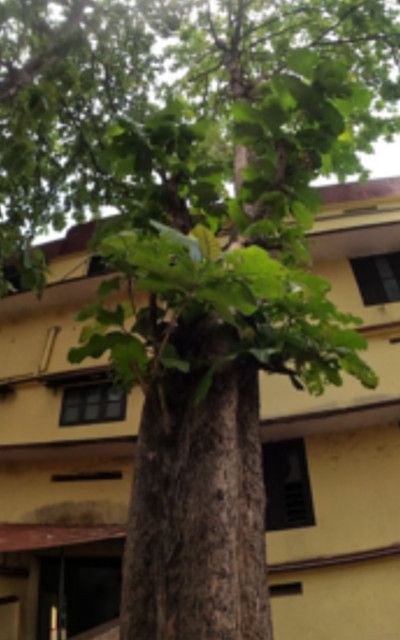 Description: Tectona grandis, commonly known as teak, is a species of hardwood tree native to south and southeast Asia, primarily found in countries like India, Myanmar, Thailand, and Indonesia. Teak is highly valued for its durability, water resistance, and natural oils, which make it resistant to pests and decay.
Description: Tectona grandis, commonly known as teak, is a species of hardwood tree native to south and southeast Asia, primarily found in countries like India, Myanmar, Thailand, and Indonesia. Teak is highly valued for its durability, water resistance, and natural oils, which make it resistant to pests and decay.
| Uses | Construction , Shipbuilding , Furniture. |
|---|---|
| Flowering and Fruiting | November and January. |
| Distribution | India , Myanmar ,Thailand , Indonesia |
| Conservation Status | International Union for Conservation of Nature (IUCN). |
| References | https://indiabiodiversity.org https://powo.science.kew.org |
| Family | Combretaceae |
|---|---|
| Taxonomic position | Plantae >Tracheophyta>Magnoliopsida>Myrtales>Combretaceae>Terminalia>Terminalia catappa L. |
| Common Name | Badam |
| Vernacular Name | ബദാം |
| Habit | Dry summers and mild, wet winters |
| Habitat | Tree |
| Nativity | Southeast Asia |
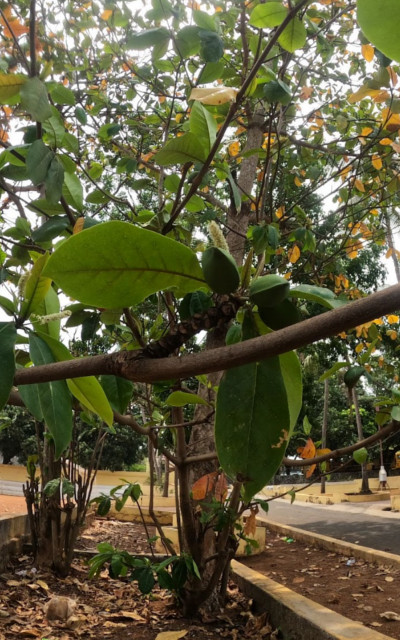 Description: The Terminalia catappa, commonly known as the sea almond, Indian almond, or tropical almond, is a large tropical tree Herbs annual or biennial, with few fibrous roots; stem unbranched, extremely short, sometimes to ca. 1 cm when growing in shade. Leaves forming a flat rosette, subsessile or petiolate; stipule. Fimbriate at apex, yellowish green or red to reddish violet, cuneate to obovate-spatulate, with glandular trichomes or glabrous.
Description: The Terminalia catappa, commonly known as the sea almond, Indian almond, or tropical almond, is a large tropical tree Herbs annual or biennial, with few fibrous roots; stem unbranched, extremely short, sometimes to ca. 1 cm when growing in shade. Leaves forming a flat rosette, subsessile or petiolate; stipule. Fimbriate at apex, yellowish green or red to reddish violet, cuneate to obovate-spatulate, with glandular trichomes or glabrous.
| Uses | Ayurveda,Folk medicine,making of soap. |
|---|---|
| Flowering and Fruiting | March-June. Fruiting: July-September. |
| Distribution | India: Throughout; Australia, Myanmar, Polynesia |
| Conservation Status | Near Threatened |
| References | https://indiabiodiversity.org https://powo.science.kew.org |
| Family | Arecaceae |
|---|---|
| Taxonomic position | Plantae > Tracheophyta >Liliopsida>Arecales>Arecaceae>Cocos>Cocos Nucifera L. |
| Common Name | Coconut |
| Vernacular Name | തെങ്ങ് |
| Habit | Herb |
| Habitat | General Habitat.Cultivated |
| Nativity | originated somewhere in Southeast Asia or the Indo-Malaysian region |
 Description: Erect trees with annular petiolar scars. Leaves pinnatisect, 4-6 m long; leaflets reduplicate, 60-100 x 2.5-5 cm, base narrow, apex tapering, acute. Spadices interfoliar, 50-100 cm long, panicled; branches to 60 cm long. Spathe 60-130 cm long, oblong, woody. Flowers monoecious, subsessile. Male flowers: often paired, to 8 mm long. Endocarp stony. Seed coherent with the endocarp.
Description: Erect trees with annular petiolar scars. Leaves pinnatisect, 4-6 m long; leaflets reduplicate, 60-100 x 2.5-5 cm, base narrow, apex tapering, acute. Spadices interfoliar, 50-100 cm long, panicled; branches to 60 cm long. Spathe 60-130 cm long, oblong, woody. Flowers monoecious, subsessile. Male flowers: often paired, to 8 mm long. Endocarp stony. Seed coherent with the endocarp.
| Uses | Husk fiber from the pith as raw material for carpets, car seat stuffing, and in agricultural as fertilizers |
|---|---|
| Flowering and Fruiting | Throughout the year. |
| Distribution | Practically cosmopolitan in the tropical and subtropical regions of the world, penetrating more widely into the temperate regions than many of its allies |
| Conservation Status | Secure |
| References | https://indiabiodiversity.org https://powo.science.kew.org |